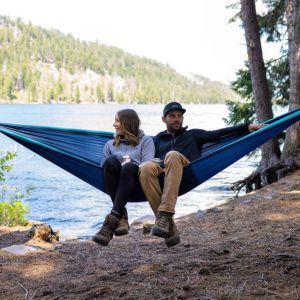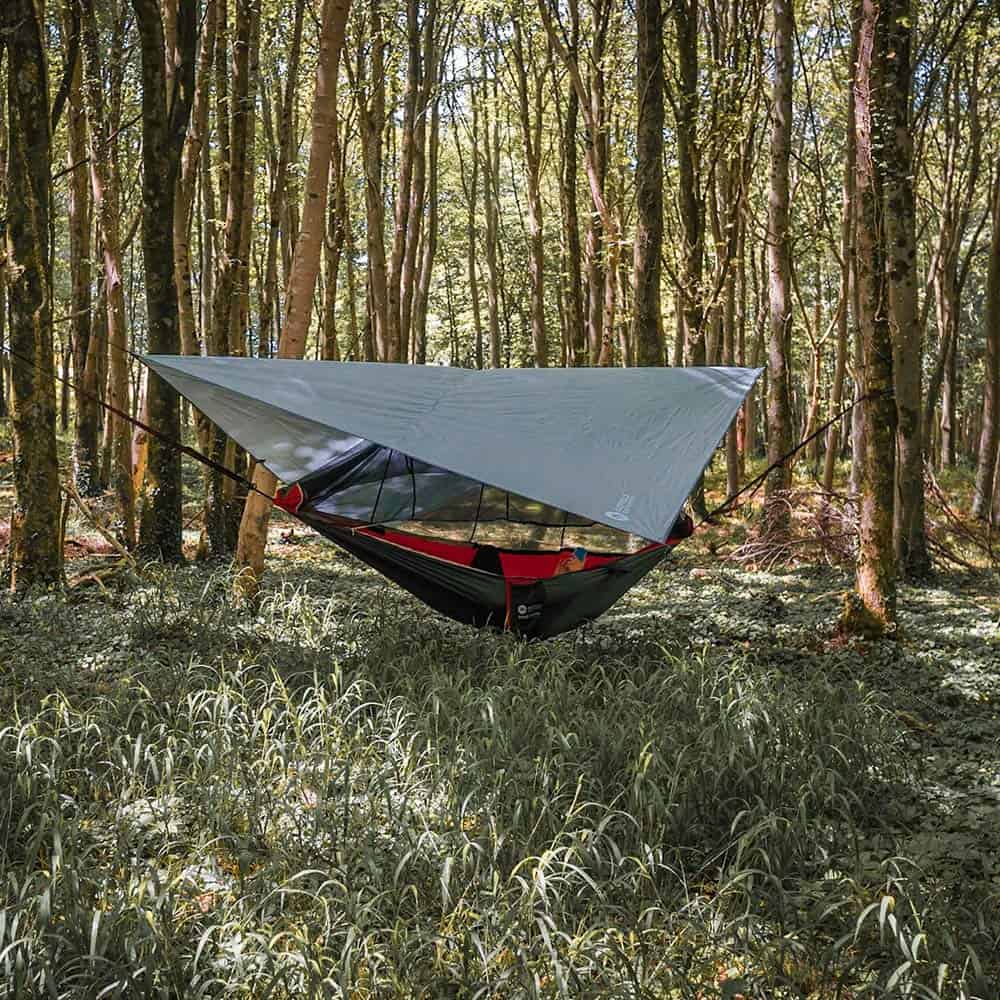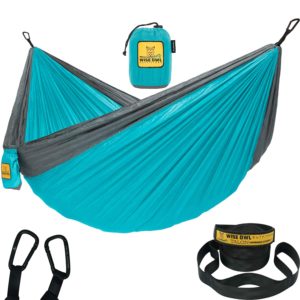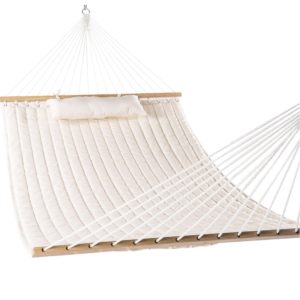Thinking about buying your first camping hammock but wondering if they are actually comfortable to sleep in? In this article, we will discuss how comfortable a camping hammock is and the best practices to ensure a good night’s sleep in your hammock.
First things first is hammock camping comfortable?
While it’s important to pick the right type and style of hammock for camping. Hammock camping can be just as comfortable as traditional tent camping if not more. In fact, most campers that have made the switch to hammock camping say it would be hard for them to go back to traditional tent camping.
However, if you are looking to have a comfortable and enjoyable experience while hammock camping there are a few very important things and best practices to ensure your hammock camping experience will be a success.
So the rest of this article will go over the basics of hammock camping and the best ways to make sure you stay comfortable while doing so.
What is a Camping Hammock and What Makes it so Comfortable?
The first thing to understand when thinking about a camping hammock is to actually know what one is.
To help with this we created this quick table that shows the differences between a camping hammock and a traditional hammock,
As you can see the main differences between a camping hammock and traditional hammock are that camping hammocks are purpose-built for camping so they tend to be lighter weight, made from durable and breathable materials, and are extremely mobile with easy setup and tear down.
Why are Camping Hammocks Comfortable?
There are many reasons why camping hammocks are so comfortable and a great fit for camping. Below are just a few of the main reasons.
- Made from breathable and lightweight materials that help to keep you cool and dry while camping.
- Keeps you off the ground so you can avoid sleeping on the ground and having a rock digging into your back all night.
- The elevated sleeping position keeps you high and dry and not down in the mud when it’s raining.
- Sleeping in a hammock helps to reduce pressure points and evenly disperses your weight over more surface area.
- More versatility to set up the hammock to your desired needs depending on the climate and weather conditions.
- Allows for minimalist style camping which helps to ease your mind for a better night’s sleep as there is less to worry about and less to keep track of.

5 Best Practices to Make Sure Your Comfortable While Hammock Camping
While camping in a hammock has a certain level of built-in comfort because of the reasons we mentioned above there are a handful of best practices that will take your hammock camping to the next level of comfort which are discussed below.
Best Position for Sleeping in a Camping Hammock
Novice and beginner hammock campers will logically and naturally think the best position for laying and sleeping in a camping hammock or any hammock for that matter is to lay perfectly straight in the hammock. Meaning your head is exactly in line with the top anchor point and your feet are exactly in line with the bottom anchor point.
The problem with this position is it can often lead to a sense of claustrophobia and very tight sleeping quarters. Leading you to look and kinda feel like a banana.
The better way to position your body in a camping hammock is to lay slightly off-center or slightly diagonal in the hammock.
Laying slightly diagonal in the hammock will help to open up the hammock more providing more space and comfort while sleeping and laying in your camping hammock.
Don’t Be Afraid to Experiment with the Setup
Often times it requires a certain amount of trial and error to get the perfect or most comfortable camping hammock set up. Because most of the comfort for hammock camping comes down to getting the hang just right.
To much hang can create an awkward or uncomfortable bend in your body leading to soreness and painful pressure points. On the other hand to little hang can cause you to lay more on top of the hammock instead of down in it again leading to discomfort and soreness.
If you are struggling with getting the right amount of hang for optimal comfort try adjusting and experimenting with the height, angle, and distance between your two anchor points. Until you find just the right amount of hang.
Insulate for Comfort in Cooler Weather
One of the great things about hammock camping in warmer weather is that it provides superior ventilation compared to standard tent camping keeping you more cool and comfortable throughout the night.
However, when camping in cooler weather and colder climates this ventalation and cooling effect will work against you. This is why it’s so important to insulate the bottom of your hammock with either a cold-weather sleeping bag or heavy blanket or quilt to keep you nice and toasty all night long.
Also don’t make the mistake I did when first starting out hammock camping by thinking if it wasn’t going to get below 50 degrees at night I didn’t need to worry about insulating.
As I quickly found out that even in slightly cooler 60-degree temperature at night it’s easy to get cold at night.
So the best practice is if the temperature is going to get below 70 degrees at night its best to have some layer of bottom insulation.
Make Sure to Have Your Rain Fly and Bug Net
While it might be romantic to think about sleeping under the stars at night in your hammock the practicality of sleeping outdoors and incremental weather makes it important to have a basic level of shelter from pesky bugs and bad weather while camping.
This is why it is so important when choosing a camping hammock to choose one that includes both a rain fly and bug net to keep those pesky bugs away and keep you dry while sleeping.
When it comes to our favorite camping hammocks we like ones that are ultra-versatile allowing you to sleep open air under the stars when the conditions are right but also allows you to batton the hatches with a rain fly or bug net when the need arises.
One of our top picks right now for a versatile camping hammock on Amazon is the Outdoors Jungle Explorer by Easthills which you can check out by clicking here.
Picking and Choosing Safe and Solid Anchor Points
The last thing to keep in mind to ensure the best and most comfortable camping hammock set up is to make sure that you are choosing safe and solid anchor points for your camping hammock.
As nothing can cause more unease or unrest than feeling unsafe or vulnerable at night which can easily lead to an uncomfortable and unpleasant night’s sleep.
So in order to keep you secure and safe while hammock camping make sure to follow these below safety tips when choosing safe and solid anchor points.
- Make sure you are anchoring to healthy and solid trees or other solid and secure mounting points.
- Don’t forget to look up. Before choosing a spot for your camping hammock make sure that there are no dead branches or trees above you that could come down at night and harm you.
- While it might be tempting to go for a birds-eye view and mount your camping hammock at high points, it’s best to stay close to the ground in case there is an emergency or a failure with the hammock.



